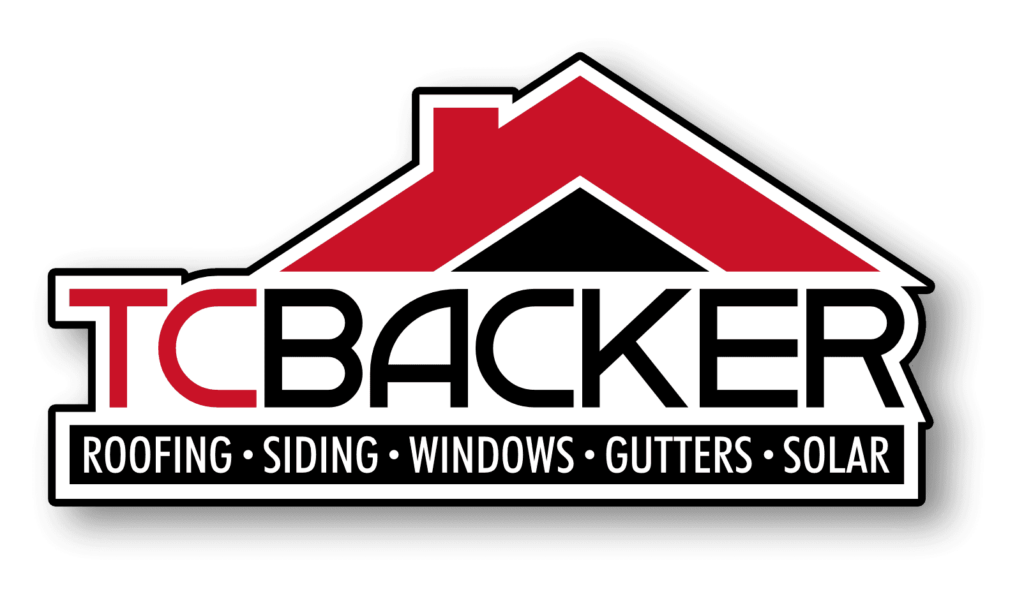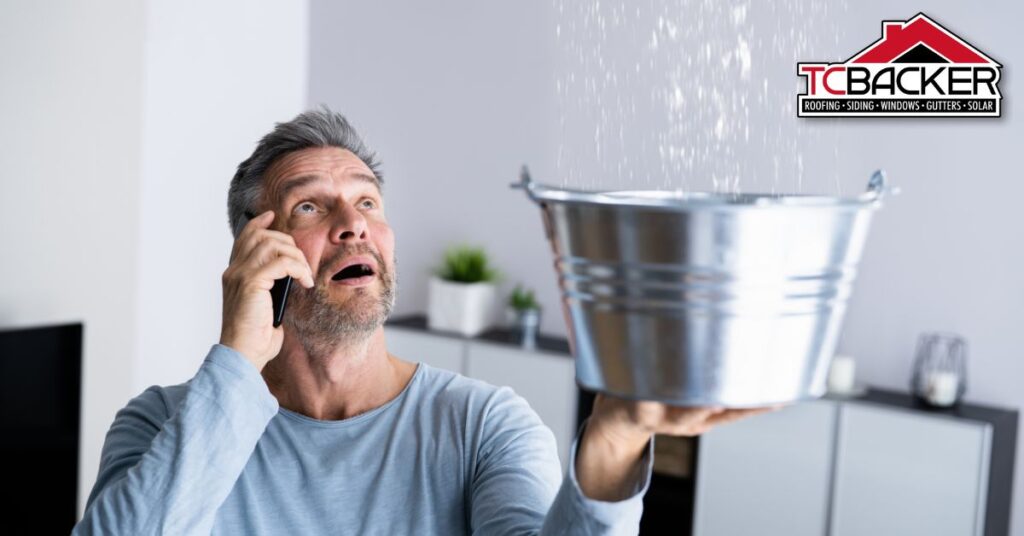Detecting and fixing roof leaks involves a systematic approach. Start by inspecting for damaged shingles, improper flashing, or clogged gutters. Look for signs like water stains, musty odors, or damp insulation in interiors and attics. Common leakage areas include chimneys, vents, and roof valleys. Temporary fixes might include tarps and roof sealant, while permanent solutions could involve shingle replacement or re-roofing. Regular inspections and maintenance help prevent future issues. If multiple leaks appear or damage is severe, consulting a professional is advisable for a roof leak repair. More detailed techniques and preventive strategies are available for those seeking thorough roof care solutions.
Key Takeaways
- Inspect for damaged shingles, improper flashing, and clogged gutters to identify potential roof leak causes.
- Look for signs of water stains, peeling paint, and musty odors in attics and ceilings to detect leaks.
- Conduct regular roof inspections focusing on common leakage areas like chimneys, vents, and roof valleys.
- Use temporary fixes like tarps and sealants to manage leaks until professional repairs can be made.
- Call a professional for multiple leaks, structural damage, or if you’re uncomfortable with heights during repairs.
Roof Leak Causes
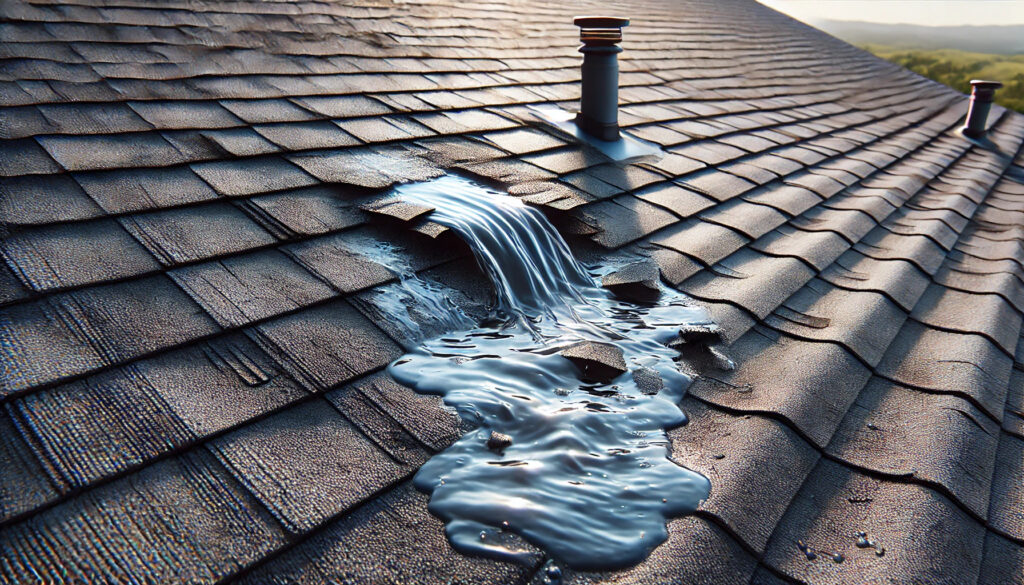
Roof leaks can arise from various sources, including damaged shingles, improper flashing, and clogged gutters, all of which compromise the integrity of the roofing system.
One of the most common culprits is damaged shingles, which can occur due to age, severe weather, or physical impact. When shingles are cracked, curled, or missing, they can no longer effectively shield the underlying layers from moisture intrusion.
Improper flashing installation is another significant cause of roof leaks. Flashing is the metal or other material used to direct water away from critical areas, such as chimneys, vents, and valleys. If the flashing is poorly installed or has become rusted, water can seep into these vulnerable spots and eventually infiltrate the roofing structure.
Clogged gutters also contribute to leak development. When gutters are obstructed by debris such as leaves, twigs, or dirt, water cannot flow freely. This leads to water pooling and overflowing, which can erode the roof’s edge and damage the underlying materials. Over time, this persistent moisture can lead to leaks.
Other potential sources of leaks include inadequate roof ventilation, which can cause condensation to form within the attic, and ice dam formation in colder climates, where melting snow refreezes at the eaves, trapping water.
Identifying these causes is essential for effective leak prevention and will ultimately prolong the lifespan of the roofing system. Understanding these factors is crucial for homeowners looking to maintain a watertight and durable roof.
Identifying Signs of a Leak

Several telltale signs can indicate the presence of a roof leak, including water stains on ceilings, peeling paint, and damp insulation in the attic. These indicators are crucial for homeowners to recognize early, as timely detection can prevent extensive damage and costly repairs.
Water stains, often brown or yellow, typically appear on ceilings or walls directly beneath the roofline. If these stains are present, it is essential to investigate further, as they are often the result of water pooling and infiltrating through compromised roofing materials.
Additionally, peeling paint around windows and doors can signal an underlying moisture issue, potentially linked to a roof leak.
Damp insulation in the attic serves as another significant warning sign. Insulation that appears wet or has lost its insulating properties can lead to reduced energy efficiency and mold growth. Homeowners should also be vigilant for musty odors in the attic or living spaces, as these can indicate trapped moisture, often associated with roof leaks.
Furthermore, visible mold growth on ceilings or walls can be an alarming indicator of prolonged exposure to moisture, suggesting the need for immediate action.
It is advisable to carry out regular inspections of these areas to ascertain the integrity of your roofing system. By being proactive and attentive to these signs, homeowners can address potential leaks promptly, safeguarding both their property and peace of mind.
Inspecting Your Roof
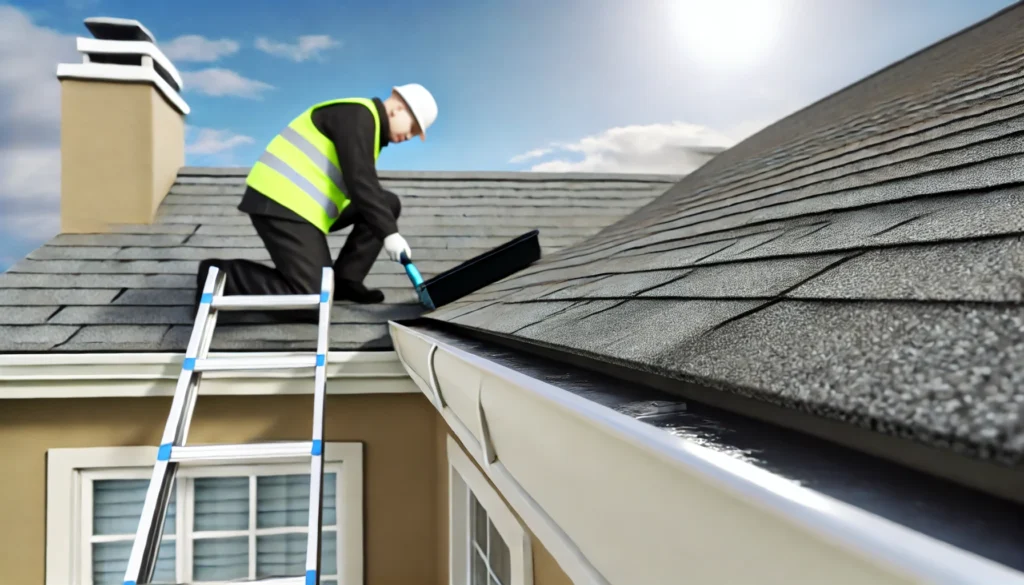
Conducting a thorough inspection of your roof is essential for identifying potential vulnerabilities and ensuring its long-term performance. Regular roof inspections can help you detect issues before they escalate into significant problems, thereby saving you time and money in repairs.
Begin your inspection from the ground by utilizing binoculars to examine the roof’s surface for any visible damage. Look for missing or damaged shingles, as well as signs of wear such as curling edges or granule loss. Pay attention to areas around chimneys, vents, and skylights, as these are common points of leakage.
If safety permits, ascend to the roof for a closer examination. Check for uneven surfaces, which may indicate structural issues. Inspect the flashing, the metal strips used to direct water away from critical areas, ensuring they are intact and properly sealed.
Additionally, inspect gutters and downspouts for blockages or damage, as poor drainage can lead to water pooling on the roof.
Checking Attics and Ceilings

After inspecting the exterior of the roof, it is important to check the attics and ceilings for signs of water damage or leaks that may indicate underlying issues. This examination is crucial in identifying potential problems that may not be visible from the outside.
Begin by accessing the attic space, ensuring adequate lighting to facilitate a thorough inspection. Look for any discoloration on the wood beams or rafters, which may suggest moisture exposure. Stains, mold, or mildew growth are also strong indicators of water intrusion.
Next, inspect the insulation materials within the attic. Wet or damp insulation should be replaced, as it loses its effectiveness and can lead to further water damage. Pay attention to the areas around vents, chimneys, and any penetrations in the roof, as these are common locations for leaks.
Additionally, check the ceilings in the living spaces below the attic. Look for sagging areas, peeling paint, or water spots, which could signify that water is seeping through the roof or directly from the attic.
If you notice any of these signs, it is essential to address them promptly to prevent further damage. Depending on the severity of the issue, you may need to consult a professional for a more detailed assessment and repair.
Taking the time to check attics and ceilings can save homeowners from costly repairs and ensure the longevity of their roofing system.
Common Leak Locations
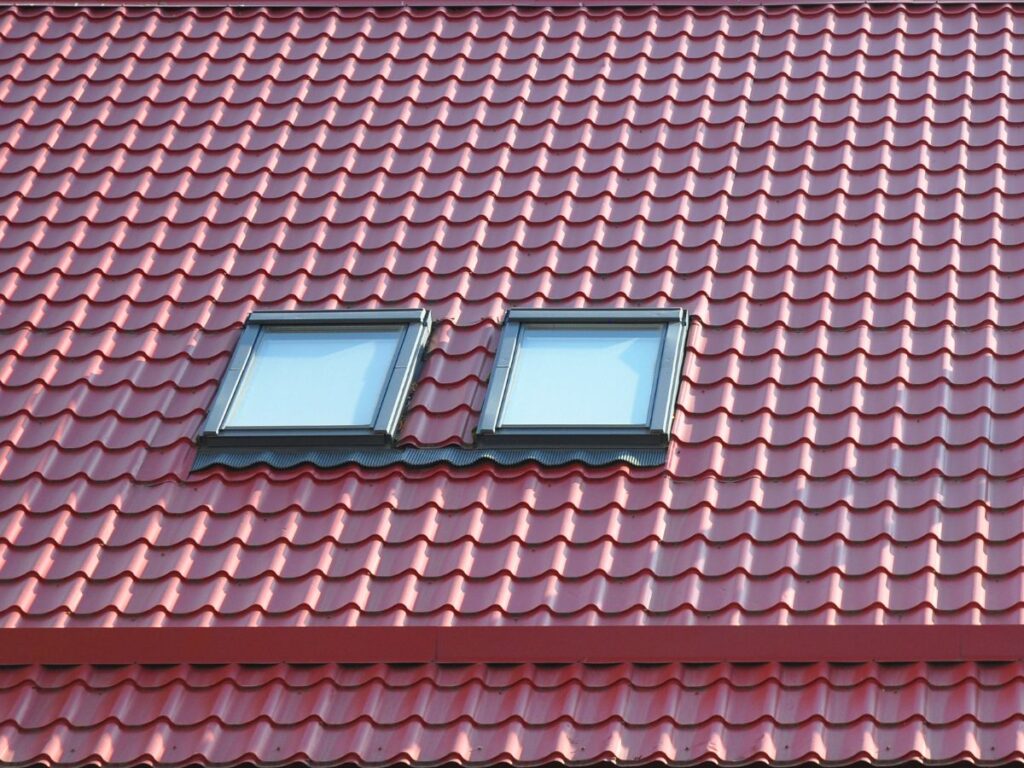
Identifying common leak locations on a roof is crucial for timely repairs and maintaining the integrity of the home. Roof leaks can occur due to various factors, including weather conditions, material degradation, and improper installation. Understanding where leaks are most likely to develop helps homeowners address issues before they escalate.
One of the most frequent leak locations is around roof penetrations, such as chimneys, vents, and skylights. These areas are susceptible to water intrusion due to the seams and flashing used in their installation. If the flashing is damaged or improperly sealed, water can easily infiltrate the home.
Another common leak location is at roof valleys, where two slopes meet. These areas can collect debris and water, leading to potential pooling and subsequent leaks. Regular maintenance to clear debris and inspect for wear can mitigate these risks.
Additionally, the edges of the roof, known as eaves and rakes, can be vulnerable to leaks if not properly sealed. Wind-driven rain can compromise the integrity of shingles or tiles at these locations, allowing moisture to penetrate underneath.
Lastly, aging roofing materials, such as asphalt shingles, can develop cracks or blisters over time. Inspecting the roof for signs of wear, particularly after severe weather events, is essential for early detection of potential leaks.
Temporary Leak Fixes
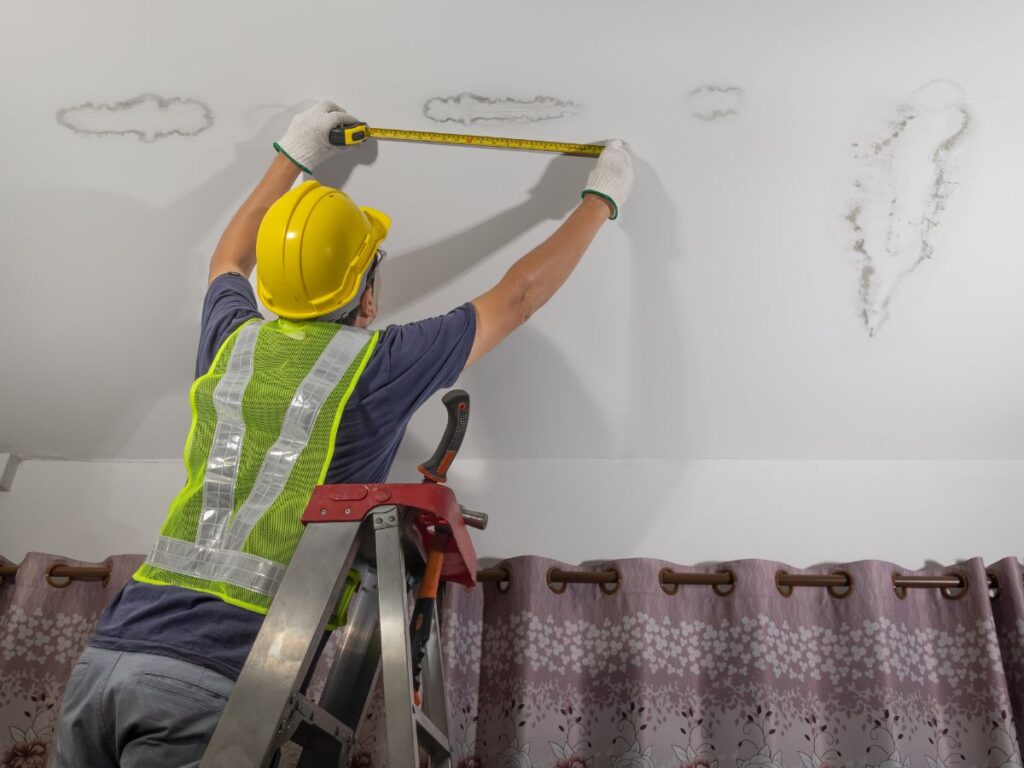
Addressing roof leaks promptly is vital, and implementing temporary fixes can provide immediate protection while more permanent repairs are arranged. These temporary solutions help mitigate further damage to your property and can prevent costly repairs down the line.
Here are some effective methods to consider:
- Tarps: Use a durable tarp to cover the affected area. Secure it with nails or weights to ensure it stays in place during inclement weather. This will redirect water away from the leak and prevent it from seeping into your home.
- Roof Sealant: For small leaks, a roof sealant can be applied directly to the area. This flexible material fills gaps and cracks, creating a waterproof barrier. Ensure the surface is clean and dry before application to achieve the best results.
- Interior Buckets: While not a repair method, using buckets or containers indoors can catch drips and prevent water damage to your interiors. Place them strategically beneath the leak to minimize the risk of damage to floors and furnishings.
While these temporary fixes are essential in managing roof leaks, they are not substitutes for professional assessment and repair. Always consult a roofing expert to evaluate the extent of the damage and recommend appropriate permanent solutions.
Permanent Repair Solutions

Permanent repair solutions are essential for effectively resolving roof leaks and ensuring the long-term integrity of your roofing system. Unlike temporary fixes, which may provide short-term relief, permanent solutions address the root causes of leaks and prevent future issues. One effective method for permanent repair involves the replacement of damaged or missing shingles. This not only restores the protective layer of the roof but also helps maintain the aesthetic appeal of your home. For flat roofs, applying a new layer of waterproof membrane can effectively seal leaks and enhance durability.
Another crucial aspect of permanent repair is the inspection and maintenance of flashing. Flashing is the material that protects joints and seams, typically around chimneys, vents, and skylights. Properly installed and sealed flashing can prevent water intrusion, reducing the risk of leaks. If you discover corroded or improperly installed flashing, it’s advisable to replace or repair it to safeguard your roofing system. In the case of more extensive damage, re-roofing may be necessary. This process involves removing the existing roofing material and replacing it with new, high-quality materials. While this option requires a larger investment, it ultimately provides a robust solution that can last for decades.
Lastly, regular inspections and maintenance play a vital role in prolonging the life of your roof. By addressing minor issues before they escalate, homeowners can ensure the ongoing effectiveness of their permanent repair solutions and protect their property from the costly consequences of roof leaks.
When to Call a Professional
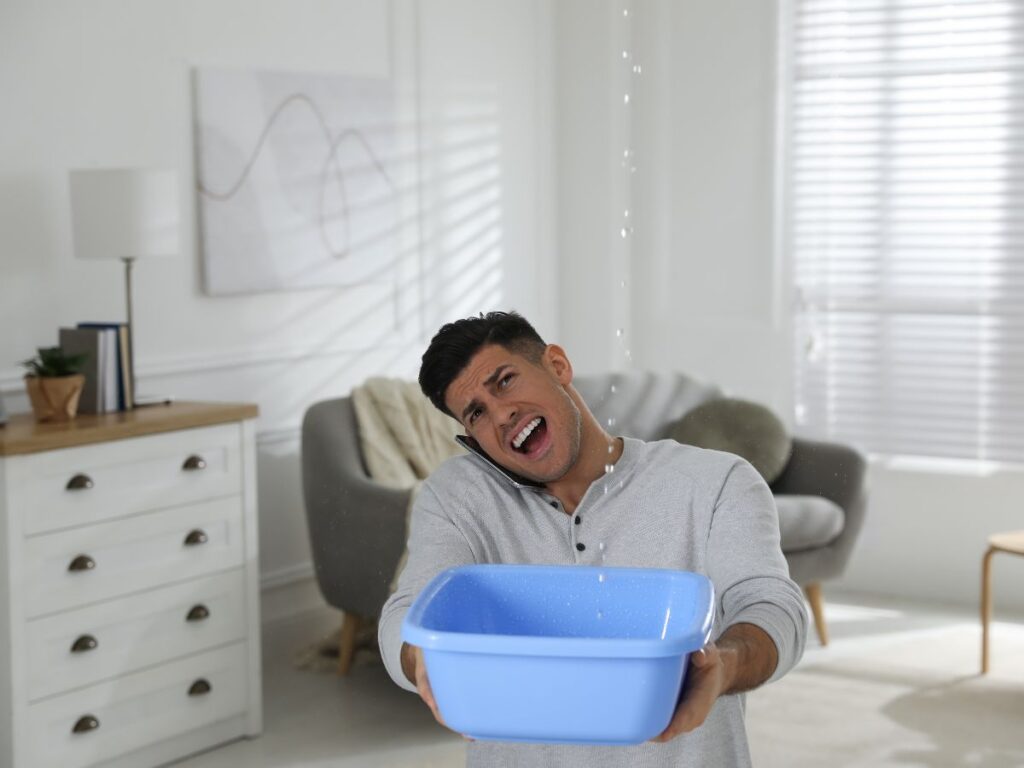
Knowing when to call a professional for roof leak repairs is crucial for maintaining the integrity of your home and preventing further damage. While minor leaks may seem manageable, several situations warrant the expertise of a qualified roofer.
First, if you notice multiple leaks in different areas of your roof, this may indicate a systemic problem that requires professional assessment. A roofer can evaluate the overall condition of your roof and identify underlying issues that could lead to more extensive repairs down the line. Second, if you are uncomfortable with heights or lack the necessary tools, attempting repairs can be dangerous. Professionals have the training and equipment to safely address roofing issues without risking injury. Lastly, if the damage extends beyond a simple leak, such as mold growth, structural damage, or significant wear and tear, it is essential to consult an expert. These issues can pose serious health risks and compromise the safety of your home.
Consider reaching out to a roofing professional in the following circumstances:
- You discover multiple leaks or extensive water damage.
- You feel unsafe or unqualified to perform repairs yourself.
- You observe signs of mold, rot, or significant structural issues.
In these scenarios, enlisting a professional not only ensures the repairs are done correctly but also provides peace of mind that your home is protected from future leaks and damage.
Preventative Maintenance Tips
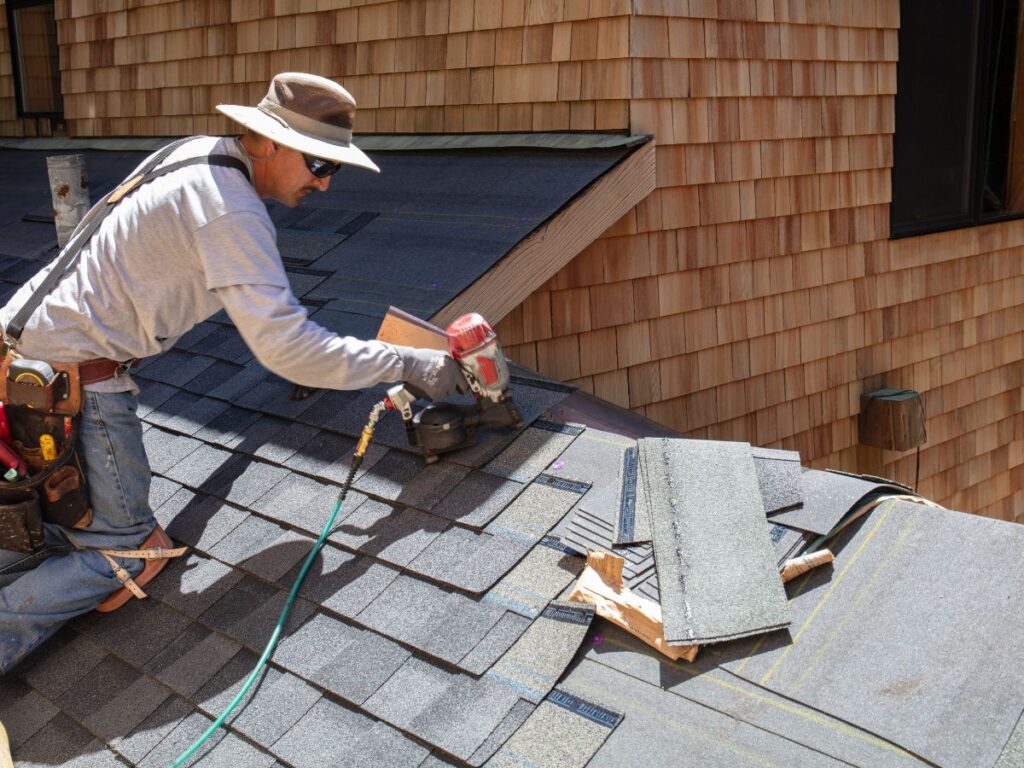
Regular preventative maintenance is essential for extending the lifespan of your roof and minimizing the risk of leaks. By incorporating routine inspections and maintenance into your home care schedule, you can identify potential issues before they escalate into costly repairs.
Start by conducting visual inspections of your roof at least twice a year, ideally in the spring and fall. Look for cracked, missing, or curling shingles, as well as any signs of algae or moss growth. These factors can compromise the integrity of your roof and should be addressed promptly. Additionally, check for debris accumulation in gutters and downspouts, as clogged drainage can lead to water pooling and eventual leaks.
Consider hiring a professional roofer for a comprehensive inspection every few years. They possess the expertise to identify subtle signs of wear that may go unnoticed by an untrained eye. During these inspections, pay particular attention to flashings around chimneys, vents, and skylights, as these areas are prone to leaks if not properly maintained.
Another crucial aspect of preventative maintenance is ensuring that insulation and ventilation in your attic are adequate. Proper ventilation helps regulate temperature and moisture levels, reducing the risk of ice dams in winter and prolonging the life of your roofing materials.
Final Thoughts
Maintaining a leak-free roof is crucial for protecting your home and avoiding costly water damage. Regular inspections, timely repairs, and proper maintenance are key to ensuring your roof’s longevity and performance. By understanding common leak causes, recognizing early warning signs, and knowing when to seek professional help, homeowners can take proactive steps to safeguard their property.
At TC Backer Construction, we understand the importance of a reliable, watertight roof. As a GAF Master Elite® Certified Roofing Contractor, we have the expertise to address all your roofing needs, from minor repairs to complete replacements. Our team is equipped to handle common leak locations, provide permanent repair solutions, and offer preventative maintenance to keep your roof in top condition.
Don’t let a small leak turn into a major problem. Contact TC Backer Construction today at (866) 585-6595 to schedule a comprehensive roof inspection. Our experienced professionals can identify potential issues before they escalate, saving you time and money in the long run. Trust TC Backer Construction to provide expert solutions for all your roofing needs – because a secure home starts with a solid roof.

